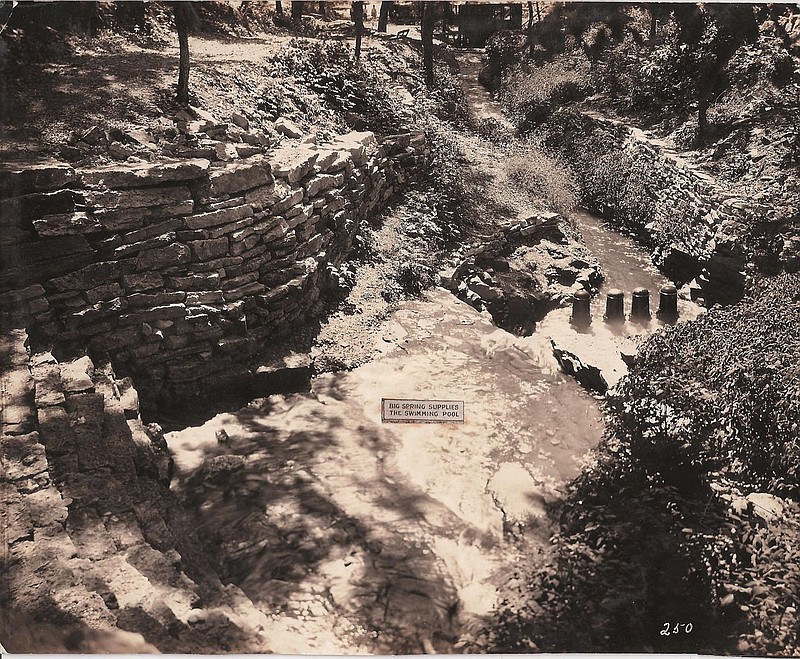This is a reprint of Xyta Lucas' Past Perspectives column in the Weekly Vista on March 27, 2013.
In January 1917, immediately after the Linebarger Brothers closed on the purchase of the original Lake Bella Vista resort, one of the first problems they had to solve was how to provide water to all of the resort.
They decided to take advantage of a spring, which the locals called the Big Spring, in the valley northeast of the lake, and use hydraulic rams as the basis for their water system. (That spring later fed the Trout Farm starting in the 1950s and is now privately owned.)
The concept of a hydraulic ram was invented in Europe in the late 1700s and introduced to the U.S. in the 1840s. Evidently the term "ram" was used because the pump forces or "rams" the water through the system.
The website, www.science.howstuffworks.com, gives a clear explanation of how it works. The force of moving water gives the pump the power it needs, so no external source of power is needed, and there are only two moving parts. The pump uses the momentum of a relatively large amount of moving water, from a source located above the pump (in this example, the Big Spring), to pump a relatively small amount of water uphill. A pipe is laid from the source of water above the pump. The pump has a valve that allows water to flow through this pipe and build up speed. Once the water reaches its' maximum speed, this valve slams shut. As it slams shut, the flowing water develops a great deal of pressure in the pump because of its inertia. The pressure forces open a second valve. High-pressure water flows through the second valve to the delivery pipe, which usually has an air chamber to allow the delivery pipe to capture as much high-pressure water as possible. The pressure in the pump falls, and the first valve reopens to allow water to flow and build up momentum again. The second valve closes, and the cycle repeats. A water wheel is another example of using the energy of flowing water, but the hydraulic ram accomplishes the same thing and has the advantage of being smaller.
By April 3, the Linebargers had their water system up and running.
Gilbert Fite wrote in his book "From Vision to Reality, A History of Bella Vista Village," 1915-1993, "Operating with water pressure, the ram pumped water several hundred feet up the hill to a concrete holding tank. Water would be pumped by gravity flow (from that holding tank) to the lodge, dining hall and any cottages that might be built."
The Linebargers focused on the east side of the lake first, building the holding tank up there, and laying pipelines to their property on that side. Later in the 1920s, they added lines that piped water to the property on the west side of the lake, and all the way up to the 55,000-gallon water tank built in 1927-28 of native fieldstone at the corner of Cunningham Drive and Cedar Crest Drive. The stone wall of that water tank is still standing. It can be viewed by going south off Oldham Drive onto Cunningham Drive and taking Cunningham to the corner of Cedar Crest, or by going up Sunset Drive off Highway 71 to Cunningham, then left on Cunningham to the corner.
The Big Spring also supplied the water for the large swimming pool that was located between what is now the Veterans Wall of Honor and the VFW building.
(Editor's note: Since this column was published in 2013, the VFW building has been torn down, and the former pool area is now part of the Veterans Memorial Park. The old water tank at the corner of Cedar Crest and Cunningham was deeded to the Bella Vista Historical Society and reroofed in 2016. The owners of the Trout Farm property donated one of the old hydraulic rams found on their property in 2017, and it is now on display at the Bella Vista Historical Museum.)
• • •
Lucas is currently the co-president of the Bella Vista Historical Museum, located next to the American Legion at the corner of Highway 71 and Kingsland. For more information, see www.bellavistamuseum.org.


